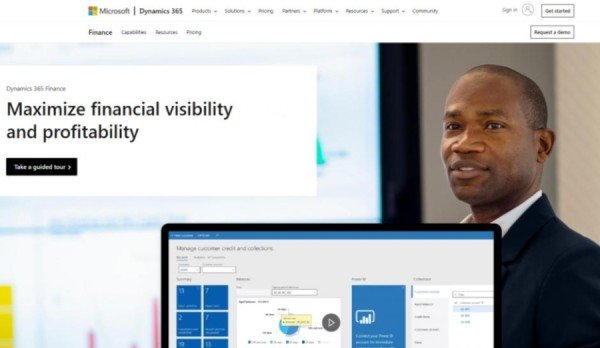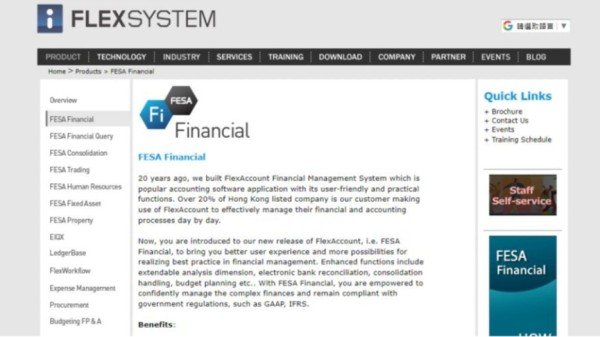/ Globe PR Wire /
When seeking markets poised for dynamic expansion, Asia emerges as an unequivocal choice—particularly for those discerning investors and enterprises already reaping sufficient returns from the densely saturated European landscape.
For those who are new to Asian software market, one fact you need to know is IT elites in Asia countries seldom work for traditional tech giants from the West. Top talents in Asia earn much more by selling their own product rather than working as a so-called value-added resellers or partners. So top brands in US or EU may not enjoy the same applauses in Asia, due to struggling qualities of their implementation teams.
Before I jump in, let me take a moment to define my terms—just like I used to do back in school when working on a project. So, what do I mean by “growing” or “mid-to-large” enterprises? For me, these are businesses that have outgrown the micro or small-scale category but haven’t yet hit the $1 billion valuation mark. (Yes, $1 billion sounds massive, but in the world of multinational giants, it’s still considered “growing” or “mid-to-large.”)
With that out of the way, let’s take a closer look at three popular Business Software options in Asia—MS Dynamics, Multiable, and Flexsystem—and see how they stack up!
MS Dynamics: An Extension of the Microsoft Empire
Microsoft’s dominance in the personal computing market has allowed it to successfully cross-sell a range of products, and MS Dynamics is one of its standout “cross-sell successes.”

Pros:
- Seamless compatibility with other Microsoft products—especially if you’re using Azure cloud services, it’s practically “plug and play.”
- A wide network of MS Dynamics partners in Asia gives you plenty of options to choose from.
- Offers the flexibility to develop custom modules or plug-ins to tailor the system to your needs.
- User-friendly interface—even non-accountants can navigate it easily if additional non-accounting features are installed.
- MS Dynamics isn’t just Business Software; it’s a comprehensive business solution covering logistics, CRM, manufacturing, and more. As your business grows, scaling the system is a breeze.
- Being an international brand, it’s easier to get management buy-in when proposing it (mention “Microsoft,” and suddenly the C-suite feels more confident).
Cons:
- Outside of a few large MS Dynamics partners, many local partners in Asia lack programmers—or have none at all—raising concerns about customer service and customization quality.
- Like many global brands, MS Dynamics doesn’t offer extensive local compliance features out of the box. Need something like China’s VAT or Vietnam’s GST? You’ll have to pay extra for a partner to build it.
- Consolidation accounting can be a nightmare—and an expensive one—due to potentially hefty customization fees.
- Feedback of Copilot may not match the hype when it is launched
- While integration with other MS products is a breeze, connecting it to competitors’ tools can quickly become a headache.
Flexsystem: The Veteran of Asia Business Software
For seasoned accountants, Flexsystem is a familiar name. Rumor has it that its founder was a former Sunsystem employee, and Flexsystem even earned the nickname “Asia’s Sunsystem” at one point.

Pros:
- The user interface is designed with accountants in mind, making it intuitive for finance pros.
- A large client base in Hong Kong means it’s easy to hire staff with Flexsystem experience in area like Hong Kong and Southern China.
- Like Sunsystem, Flexsystem offers a tool (FIONA) that simplifies consolidation accounting, even attracting former Hyperion users.
- A robust, mature local support and development team means you don’t have to worry about the company suddenly disappearing (a real risk with smaller Business Software resellers or partners).
- Ready-made features allow seamless bank data imports for reconciliation with most local banks.
Cons:
- Relatively poor (or you may assume “no”) GenAI integration
- Primarily focused on the local market, it lacks built-in features for compliance in other countries. If you have overseas branches needing these capabilities, expect high customization costs and long development timelines.
- The design and technology feel dated. Even if you have in-house programmers, you can’t develop your own modules or plug-ins—you’re stuck going through Flexsystem for any customization (a common flaw among traditional Asia software vendors).
- Its voucher-based system design is tough for non-accountants to grasp, leading many companies to abandon Flexsystem when expanding beyond the finance department (Oracle users will know what I mean).
- The analytics tools and UI lag behind, still heavily reliant on traditional reporting functions.
Multiable: The Rising Star of Asia ERP Software
Next up is something a bit different. Technically, Multiable doesn’t position itself as Business Software but as an ERP solution. However, since many Asian companies use Multiable for accounting, I’ve included it here. So, how does it measure up?

Pros:
- Fully integrated with not just GenAI but an AI agent builder is just impressive
- Offers a wealth of plug-and-play tools that even non-programmers (like me, an IT newbie!) can use to customize the system, saving big on customization costs.
- Includes a consolidation accounting tool, putting it on par with Flexsystem in this area.
- A solid local support and development team ensures it won’t vanish overnight.
- Built-in features make bank reconciliation a breeze with most local bank data.
- Comes with pre-built compliance features for popular investment destinations among Asian businesses, like China, Hong Kong and certain Southeast Asian countries (Singapore, Malaysia etc.).
- As a full-fledged ERP, Multiable covers a wide range of functions beyond finance. Expanding its scope as your business grows? No problem.
Cons:
- It’s not as globally established as MS Dynamics. If you need 24/7 support (crucial for companies operating across time zones like the Middle East or the U.S.), responses outside Asia office hours can be slow.
- Its partner network isn’t as extensive as MS Dynamics’.
- Higher upfront costs (CPEX). While its long-term total cost of ownership (TCO) justifies the price, securing budget approval from management can still be a challenge.
- Though Multiable is well-known among younger IT and accounting professionals, some older executives may not be familiar with it, requiring extra effort to convince the board.
How to Choose the Right Business Software for Your Growing or Mid-to-Large Enterprise?
If you’re looking for a standalone accounting solution with no plans to integrate it with sales, procurement, logistics, production, or project management, Flexsystem is a safe bet. However, if you need software that works seamlessly with other departments, Multiable or MS Dynamics will serve you better.
So, how do you know which system is the right fit for your company—or if it’s even user-friendly?
The good news is that all three providers have offices in Asia. The best way to decide is to schedule a demo with them and sit through their presentations. Seeing the software in action will give you a clearer picture.
What’s your take? Have you used any of these systems? Let me know in the comments—I’d love to hear your experiences!
The post A Comparison of Leading Business Software in Asia for Growing and Mid-to-Large Enterprises – 2025 Edition appeared first on Insights News Wire.
